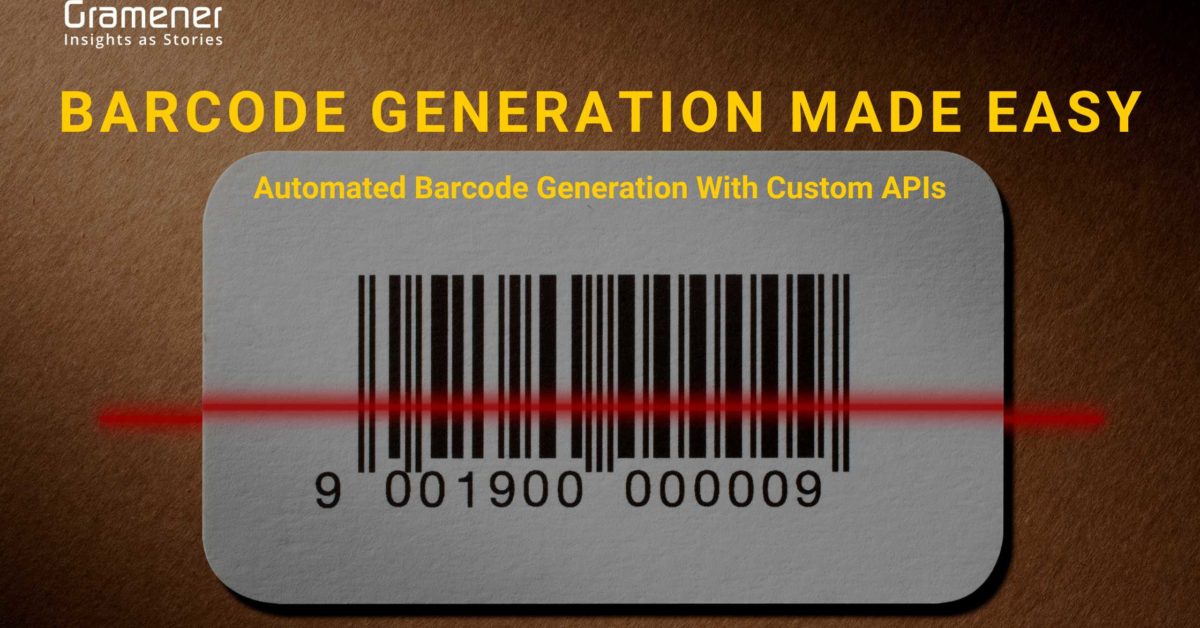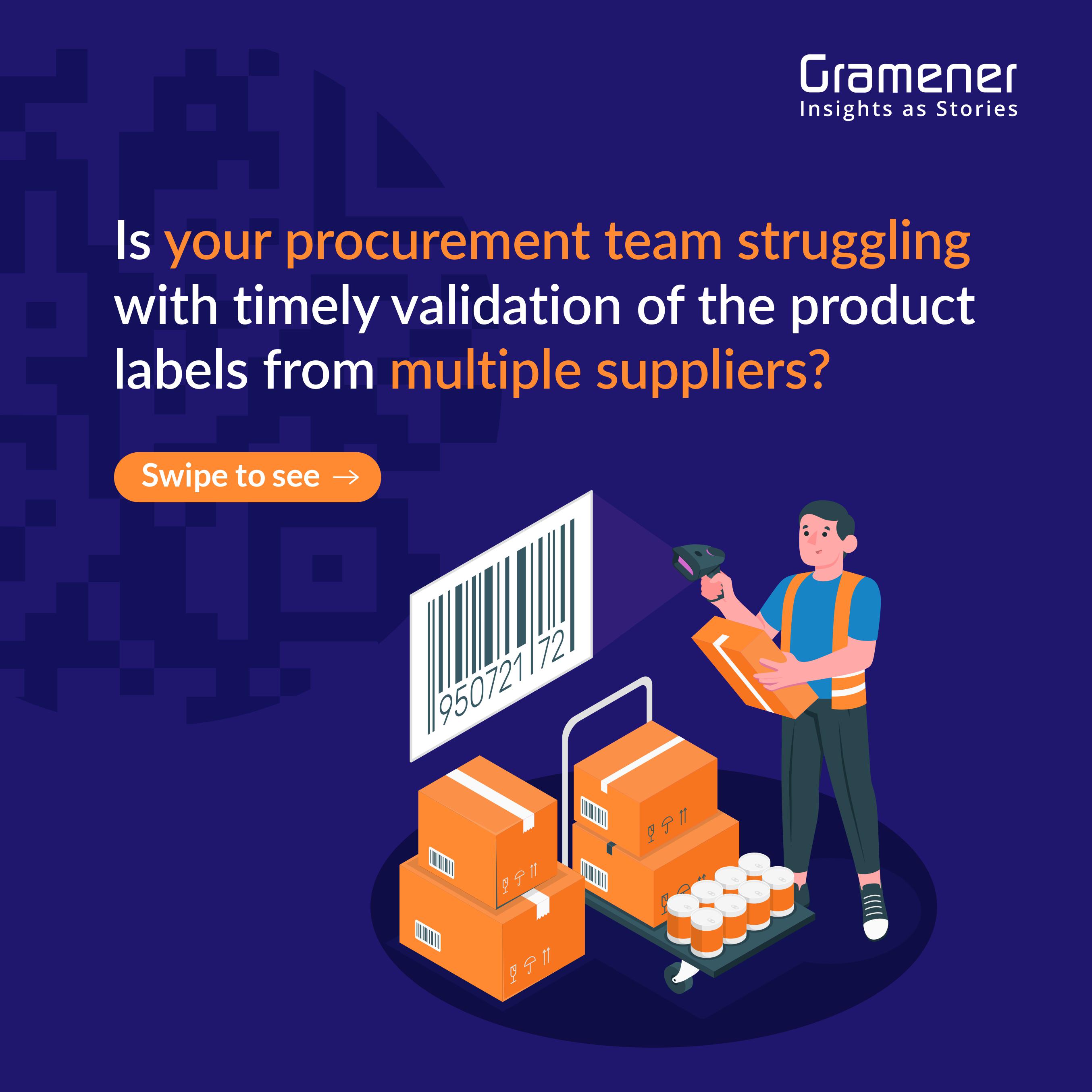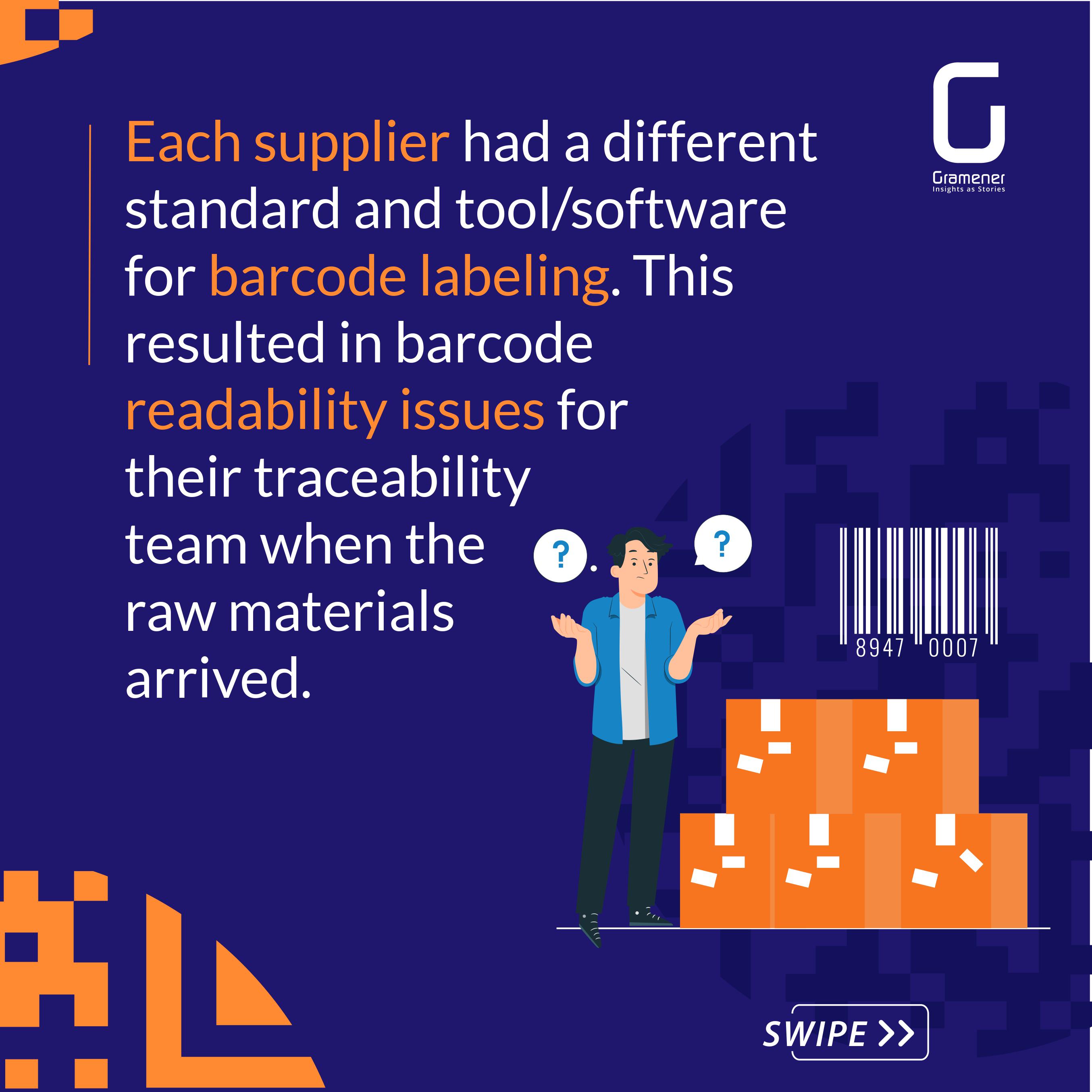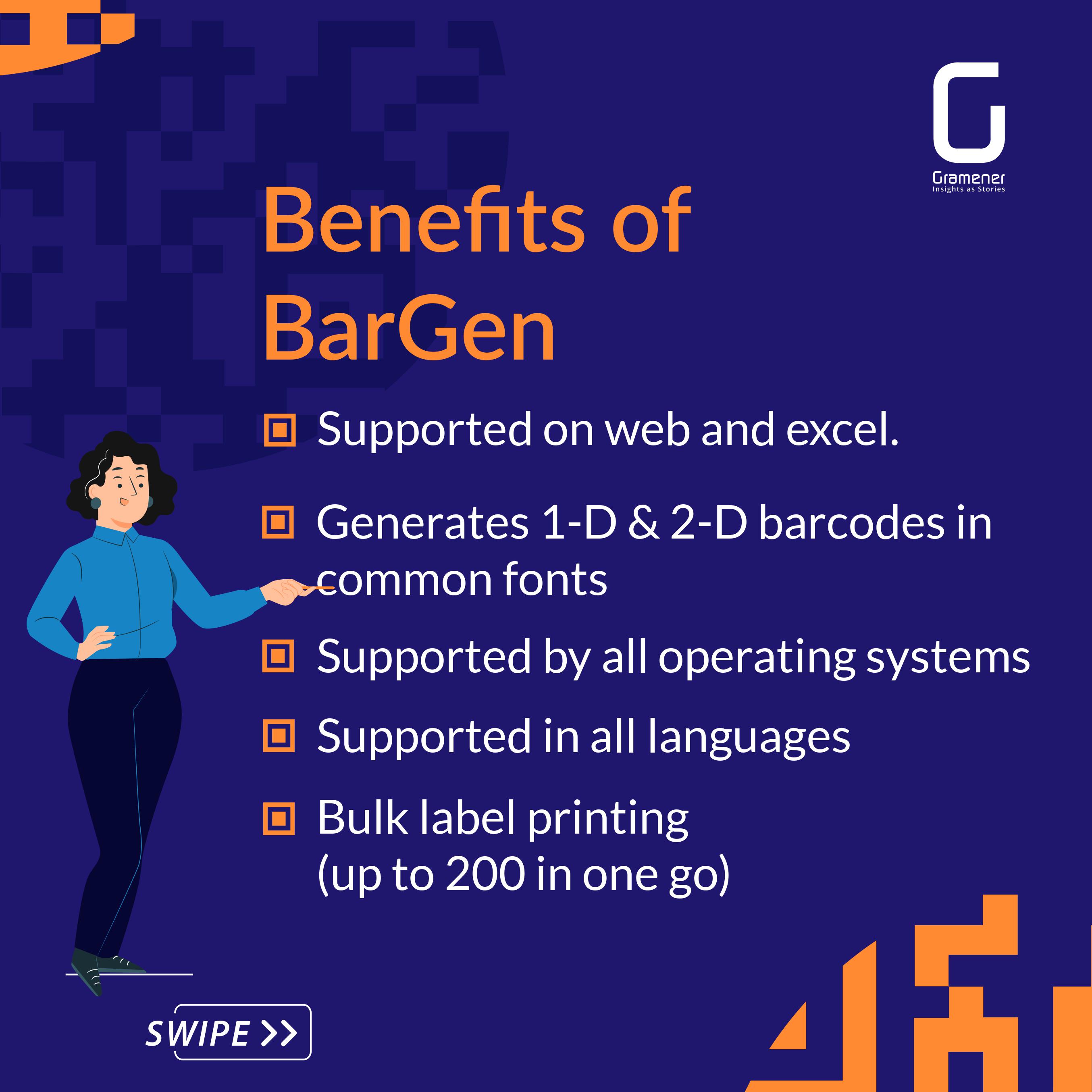Companies should be able to trace goods as they move from one location to another, and barcode systems in manufacturing have simplified the process. On the other hand, automating barcode generation using simple custom APIs can help manufacturing companies generate 1-D and 2-D barcodes and reduce client compliance and language support issue. Achieving top-quality standards and ensuring optimal productivity is indispensable to a successful business.
Businesses require intelligent manufacturing processes that can leverage technology. One of these is barcoding technology that enables advanced production.
A barcoding system helps connect your equipment, raw material, and people to centralized systems. You can track each element better and streamline your business to improve efficiency.
Table of Contents
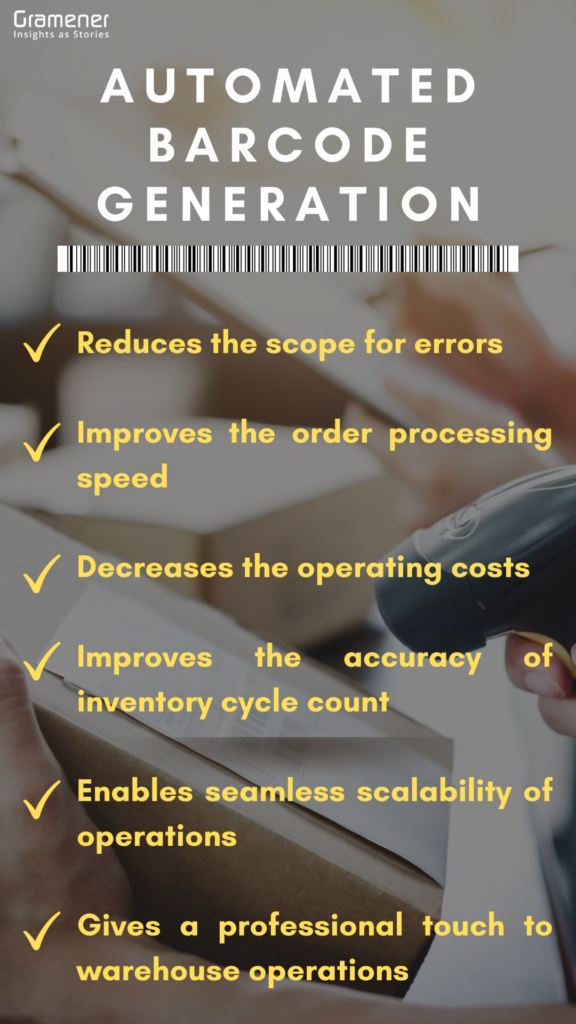
What is a Barcode?
Barcodes are everywhere around us. When you pick a product off a retail shelf, you will invariably find a barcode on it. Barcodes are codes with predefined patterns and vertical lines arranged in parallel. Numbers also accompany the design and lines.
When you scan the code with the help of a barcode scanner, the information gets fed into computer systems. The system will automatically match the code with the product available in the inventory.
Challenges with Barcoding in Manufacturing Companies
Here are various challenges faced by manufacturing companies with barcode management:
Manual Intervention Is Time Consuming
Manual activities are always time-consuming, leading to unforeseen delays. The delays could be even longer if several people are involved. If your barcode management needs human intervention, there are chances your output speed will get reduced till things stabilize.
Manual Intervention Can Lead To Error
The manual intervention comes with the risk of errors. These errors can prove costly for your business and lead to revenue loss if left unnoticed. The chances will be more if your operator has bulk work in the system.
Maintaining Heavy Excel Sheets & Spreadsheets For Barcode Inventory Management
Excel sheets and spreadsheets loaded with data can be a nightmare for everyone. The very thought of navigating through hundreds of cells can put one off. Chances of errors and the work getting prolonged remain high in such cases.
Gramener’s Automated Barcode Generation API Reduced Standard Compliance & Language Support Issues By 67%
One of Gramener’s top clients is a global leader in the semiconductor industry. It sources raw materials from suppliers worldwide to manufacture multiple products in-house. Using different software & solutions to validate labels posed a challenge to the manufacturer.
In current barcode generator solutions, each application must be set up manually to meet the label standards. Due to current barcode generators’ poor language conversion capabilities, the labels are often unreadable.
Using its low-code platform, Gramex, Gramener developed BarGen, a barcode application supported both on the web and in Excel. Using widely available fonts, BarGen generates 1-D & 2-D barcode labels supported by most devices.
Users are no longer restricted by OS support or language barriers and can bulk-print labels instead of tediously printing them one after another manually.
The intelligent system leverages user-level input, converting them through APIs into 1-D & 2-D barcodes & generating labels in predefined templates. It can configure the user input fields and the label template required to create the label. The application uses custom APIs to validate & generate 1-D and 2-D barcodes based on user inputs. The application, built on Gramex, incorporates the barcodes into the predefined template to create accurate labels.
Gramener’s automated barcode generation system, BarGen, reduced the client’s standard compliance and language support issues by 67%. The BarGen application does not require any setup. Users can register and start bulk-printing up to 200 labels at a time.
How to Implement Barcode System in Warehouse or Inventory Management
Follow Industry Barcode Standards
It is essential to know that whatever item you sell will have the barcode you place on it. SKU barcodes are a popular option for inventory management. However, you also need to consider the industry standards of your business area. Different industries require different barcode standards.
Retail and electronic items need data matrix barcodes. The size of your products will also determine the barcode choice. Code 128 is suitable for supply chain management, while Code 39 is for automotive and defense equipment. Code 39 barcodes need to be large for accurate scanning, while the data matrix can go with smaller product packages. If you have a lot of information, 2D barcodes will help.
Define Barcode Functions
Your inventory can include a range of items for different purposes. Some could be for resale, while a few could be for internal use. You can also list different inventory categories like resale items, raw materials, finished products, packaged materials, etc. It is advisable to define your barcode functions precisely. Correct categorization and labeling will help you improve the recordkeeping process.
Choose the Barcode Inventory Management Software
POS systems are ideal for generating SKU barcodes that enable seamless inventory tracking. However, you will need advanced solutions if you have specialized barcodes. Additionally, you will have to make sure that the barcode system integrates with your POS and accounting software.
You can choose various types of barcode systems depending on your business needs. Handheld ones are more cost-friendly than flatbed ones. Other factors like lighting and air quality will also affect your decision.
Fixed barcode scanners remain integrable with your POS systems. You can also opt for portable and wireless scanners for easy operations. Other options like free barcodes for mobile phones are not ideal for business settings.
Implement Barcode Inventory Management Procedures
It is best to streamline your inventory operations for improved efficiencies and data accuracy. Ensure that you have uniform sizes and the placement of barcodes on items. It will help you optimize barcode scanning for the best results.
You can also define various KPIs (key performance indicators) to track your inventory better. It will help you keep pace with stock levels, sales, and an overview of your revenue. Your warehouse staff should also be trained on the uniform implementation of barcode inventory management systems. Getting accurate results will be possible only when everyone is aware of their duties.
Different Types of Barcodes
Here is an overview of the varied types of barcode systems for manufacturing.
Numeric
These are one-dimensional barcodes that contain only numbers. Also known as 1D barcodes, they display information with the help of parallel lines. There are varying widths and spacings between each line, making them look one-dimensional or linear.
Numeric barcodes are a traditional option and are widely used. EAN and UPC are some popular numeric barcode types used across products.
Alphanumeric
Alphanumeric barcodes are used in retail groceries, automotive and defense equipment, logistics, etc. It comes in various types like Plessey code, LOGMARS, Code 39, Code 128, etc. They have a range of numbers and characters, making up a barcode.
2D Barcodes
These are the most popular barcodes. 2D barcodes have graphical images with both vertical and horizontal planes. The unique design of these barcodes can save information up to 7089 characters, much more than what a 1D barcode can encode.
The 2D barcode system also offers more storage space for data in one code. There is also less scope for error due to self-check mechanisms. The barcodes that you usually find on your smartphones are all examples of 2D barcodes. Your mobile phone camera can scan it to read the related information.
These barcodes are easily transmittable through messaging services and remain secure. The encryption system of 2D barcodes adds a layer of security.
How to create Automated Barcode Systems?
You may wonder, what are barcode systems used for in manufacturing? In manufacturing, barcode systems are used extensively in inventory and warehouse activities:
Inventory
Small and large manufacturing businesses can use barcode systems to manage their inventories better. Here’s how it simplifies the operations for improved efficiencies.
Expedite Processes
Manual data entry work remains time-consuming and prone to errors. Barcodes scanning does that job within seconds, speeding up the next set of activities like collection and dispatching. You can also reduce the search time for your factory workers. Barcodes track everything from equipment to inventory.
Seamlessly Analyzes Data
Data-driven decision-making will help you streamline processes and improve profits. You can get a uniform view of your inventory, including its movement, with the help of barcode systems. It will help you analyze the data in seconds through detailed statistics. Your operations team can generate better forecasts for sales and keep inventory stocked at all times.
Reduces Errors
There will be no risks of errors in data entry. Barcode systems eliminate the scope of erroneous readings. You can also increase the operational speeds and get more work done in less time.
Enables Accurate Records
Accurate recordkeeping can be challenging if you do not have automated systems. Tracking incoming and outgoing movements is seamless with a barcode system. It will help you get a real-time view of your inventory and the financial aspects of your business.
Warehousing
Enabling smooth warehouse operations requires you to orchestrate a set of steps in the desired manner. Manual intervention and spreadsheets to track inventory can lead to errors and delays. Barcoding helps tag locations, racks, and containers that remain scannable. It will help you conduct automated scanning of items and their transfer across areas.
Benefits of Automated Barcode Generation Systems in Manufacturing
Here are the various ways a barcode scanning system for manufacturing helps you improve your warehouse efficiencies.
Reduces Labor Expenses
Barcode systems help you eliminate the need for manual scanning and managing your inventory. It will help you have a lean payroll and reduce operational costs. The chances of human errors also get eliminated with automated systems. Information transfer and management will be seamless with a barcode scanning system.
Improves Productivity
Your warehouse staff can process several orders with the help of barcode systems. It will increase your workforce productivity, leading to improved value for your business. They can also concentrate on other areas that require more human attention.
Improves Workflows
Scanning barcodes help you get the information in real-time. You can eliminate issues like the incorrect packaging of products for shipment. If wrong items are removed, you can take corrective measures without wasting time.
Your workforce will experience better productivity by not wasting their time on activities that do not require their attention. They will also be able to execute more orders. It will also help the staff pick the correct items by following a suitable procedure.
Improves Inventory Efficiency
Barcode systems help you improve the efficiency of your inventory systems by offering information in real-time. You can track the stock levels accurately and take the necessary steps. Ensuring optimal storage levels will be possible with the regular use of barcode scanning systems. You can also avoid overstocking items that could block the precious space in your inventory.
Advantages of Using Automated Barcode Systems in Warehousing
Reduces the scope for errors
Improves the order processing speed
Decreases the operating costs
Improves the accuracy of inventory cycle count
Enables seamless scalability of operations
Gives a professional touch to warehouse operations
Contact us for custom built low code data and AI solutions for your business challenges and check out supply chain AI solutions built for our clients, including Fortune 500 companies. Book a free demo right now.

